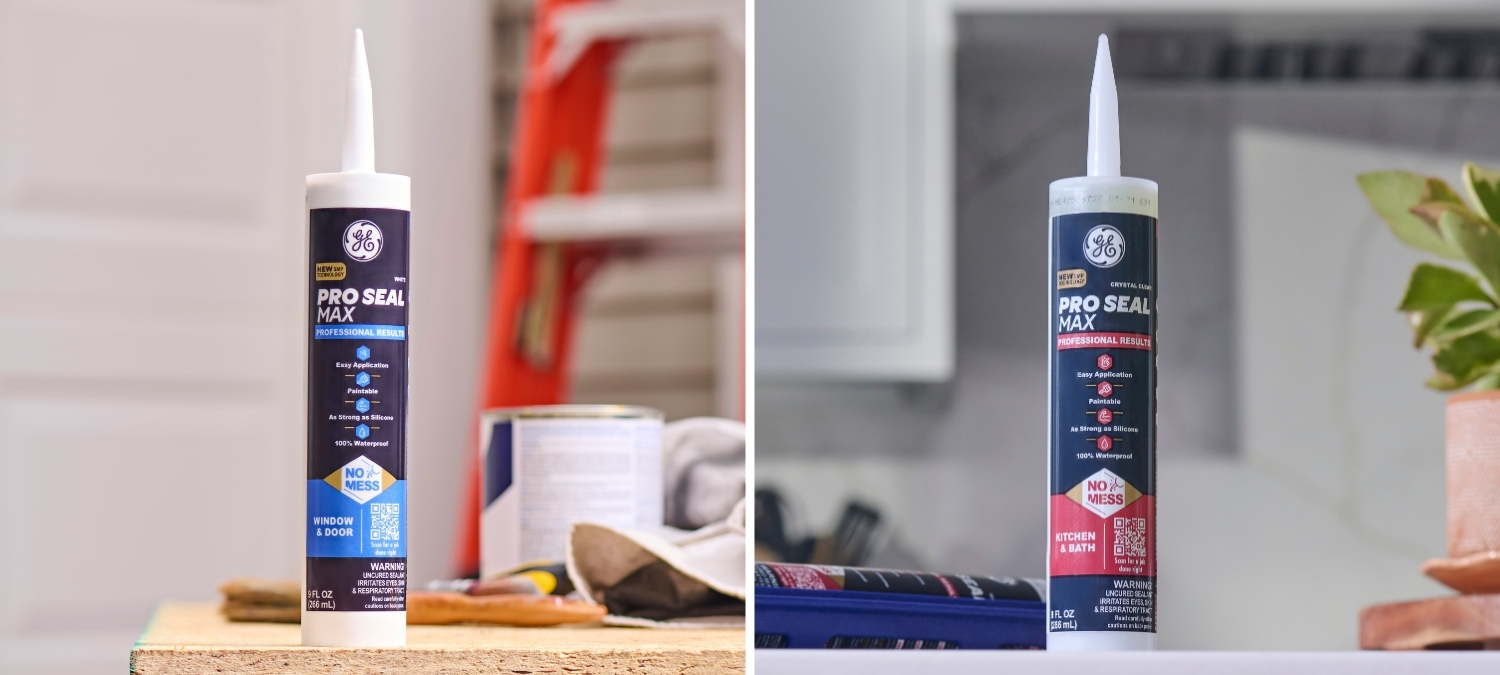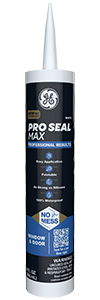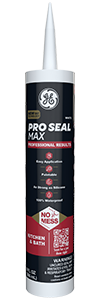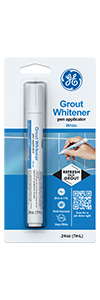Note: This DIY article is provided as a general guide only and is not intended to take the place of product-specific installation procedures; always follow applicable manufacturers’ instructions. Depending on your home’s age and condition, location within the home, and other potential factors, repairs and/or upgrades or other services may be necessary prior to the beginning and/or completion of your project that may involve the services of a home improvement professional. This article does not include advice pertaining to local building codes and/or any related inspections.
Hybrid sealants combine the strength of acrylics with the flexibility of silicone, giving you a product that sticks well, moves with your surfaces, and can be painted to match. In this guide, we’ll explain what hybrid sealants are, how they stack up against 100% silicone, and four smart ways you can use GE’s Pro Max hybrid series around your home.
Hybrid sealants and 100% silicone sealants both play important roles in home improvement, but they are designed with different strengths in mind. Hybrid sealants bring added versatility, bonding securely to a wider range of substrates, including wood, masonry, and metals, making them valuable for exterior and structural applications.
What is a hybrid sealant?
A hybrid sealant is a relatively new technology that blends the best features of silicone and polyurethane into one versatile formula. Like silicone, it remains flexible after curing, so it can move with surfaces that expand and contract through seasonal changes. Hybrid sealants like GE’s Pro Seal Max series combine the waterproof strength and flexibility of silicone with the paintability and ease of use you’d expect from an acrylic. The result is a versatile product that bonds to a wide range of materials like wood, vinyl, aluminum, and masonry.
Silicone vs hybrid sealant: how do they compare?
Hybrid sealants and 100% silicone sealants both play important roles in home improvement, but they are designed with different strengths in mind. Silicone is often considered the gold standard for flexibility and moisture resistance. It stays elastic after curing and is highly effective in areas with constant water exposure, like showers or sinks. However, silicone can not be painted and sometimes struggles to bond with certain building materials.
On the other hand, hybrid sealants bring added versatility. They bond securely to a wider range of substrates, including wood, masonry, and metals, which makes them valuable for exterior and structural applications. Unlike 100% silicone sealants, hybrid sealants can be painted once they cure, which helps them blend seamlessly with trim, siding, or other finishes. This makes them a practical solution for many DIY sealing projects where appearance matters as much as performance. They are also designed to stand up to weather, UV exposure, and moisture, so they work well indoors and outdoors.
While silicone may still edge out hybrids in extreme water exposure, hybrids often deliver a better balance of durability, adhesion, and appearance. For DIYers, the decision usually comes down to location: use silicone in chronically wet zones and hybrids where flexibility and paintability are weightier priorities.
Best hybrid sealant uses
The unique characteristics of hybrid sealants make them the right choice for certain jobs. Here are four of the most common.
1. Sealing exterior siding and trim
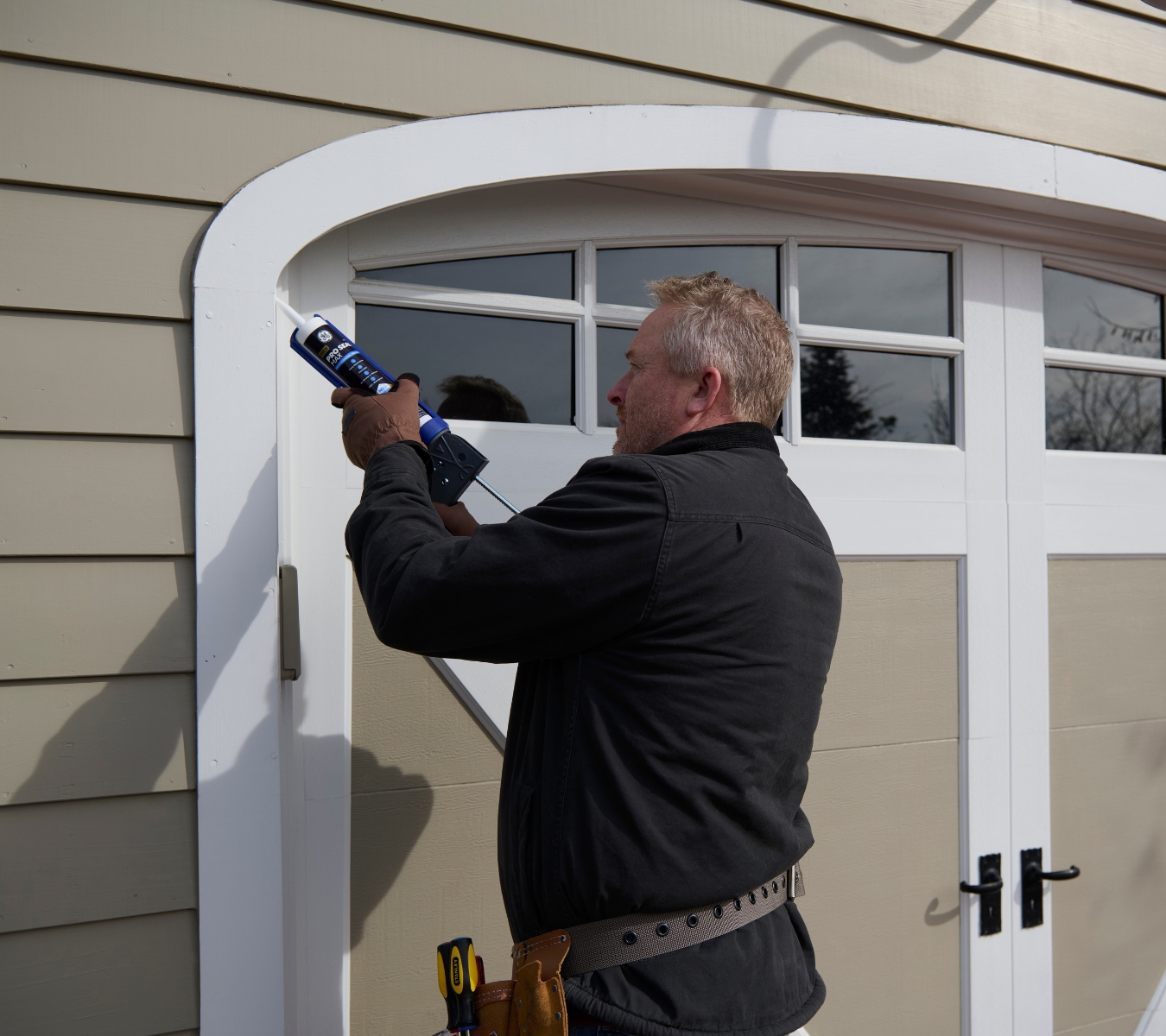
Exterior siding and trim are constantly exposed to sun, rain, and fluctuating temperatures, leaving them vulnerable to gaps and cracks over time. These openings allow moisture to seep behind siding or trim boards, leading to rot, mold, or costly structural issues. They also create easy pathways for cold drafts to enter during the fall and winter months. Hybrid sealants are well-suited for this type of job because they combine strong adhesion with the flexibility needed to handle seasonal expansion and contraction.
Unlike traditional caulk that may crack or pull away, hybrid sealants hold their bonds even under tough outdoor conditions. GE Pro Seal Max Window & Door is an excellent choice for exterior siding as it adheres strongly to wood, vinyl, and fiber cement, and can be painted to blend with exterior finishes. For a more professional-looking finish, seal siding and trim with GE’s Sealant Smoothing Tool.
2. Kitchen and bathroom counters
Counters in kitchens and bathrooms deal with constant wear, moisture, and frequent cleaning. Cracks or gaps where the counter meets the backsplash, sink, or wall can allow water to seep through, leading to mold growth or damage beneath the surface. Traditional caulks may break down quickly in these environments, but hybrid sealants offer the durability and flexibility needed to keep these busy areas protected.
Hybrid sealants adhere strongly to common counter materials like laminate, stone, or tile, and because they are paintable, you can blend them nicely into the design of the space. For high-traffic areas that demand both strength and style, GE Pro Seal Max Kitchen & Bath is the smart choice. It resists moisture, stands up to routine cleaning, and maintains a neat, finished look. While you’re working in your kitchen and bathrooms, you can also complement the finished look of your seals by bringing out the contrast in your grout lines with GE’s Grout Whitener Pen.
3. Roofing and gutter joints
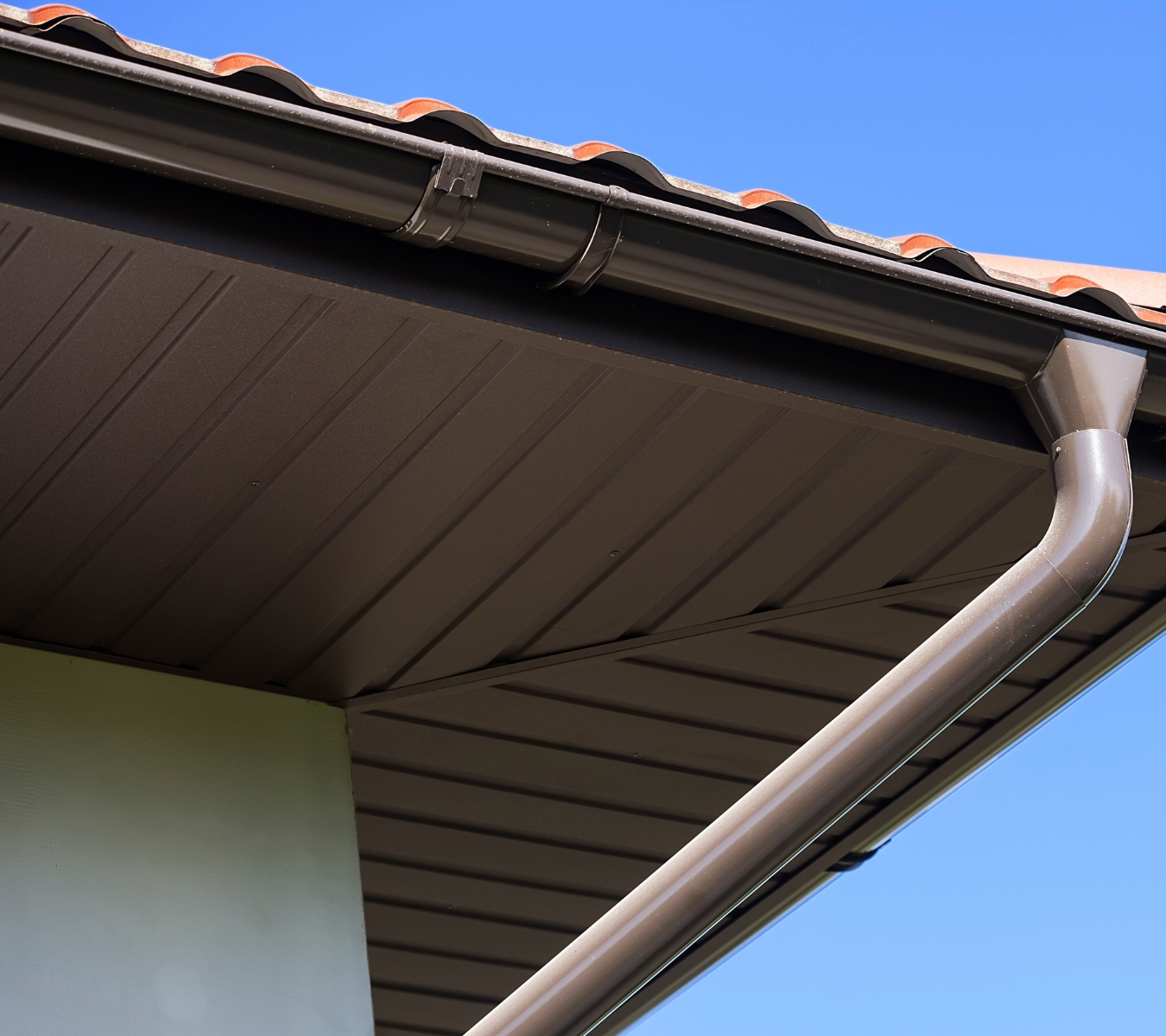
Roofing and gutter systems can be challenging areas to seal. Joints between shingles, flashing, and gutters often expand and contract with temperature changes, causing standard caulks to crack or separate. Once gaps open, water can seep in, leading to roof leaks, wood rot, or ice dams in colder climates.
Hybrid sealants bond well to common roofing and gutter materials, like metal, asphalt shingles, and PVC. Unlike traditional products that may deteriorate quickly outdoors, hybrids resist UV rays and moisture.
4. Sealing around decks and outdoor structures
On your decks, pergolas, and other outdoor structures, joints where wood meets masonry or composite boards can separate over time, creating gaps for water and pests. Left unchecked, this can lead to rotting posts, loose boards, or structural instability. Hybrid sealants are well-suited for these situations because they bond to a wide variety of materials used in these structures and stay flexible as surfaces expand and contract with the seasons. Unlike traditional caulks, hybrids resist cracking and shrinking, which keeps joints sealed longer.
To get GE Sealants’ products for your home improvement project, visit these fine retailers in the U.S. or Canada.

